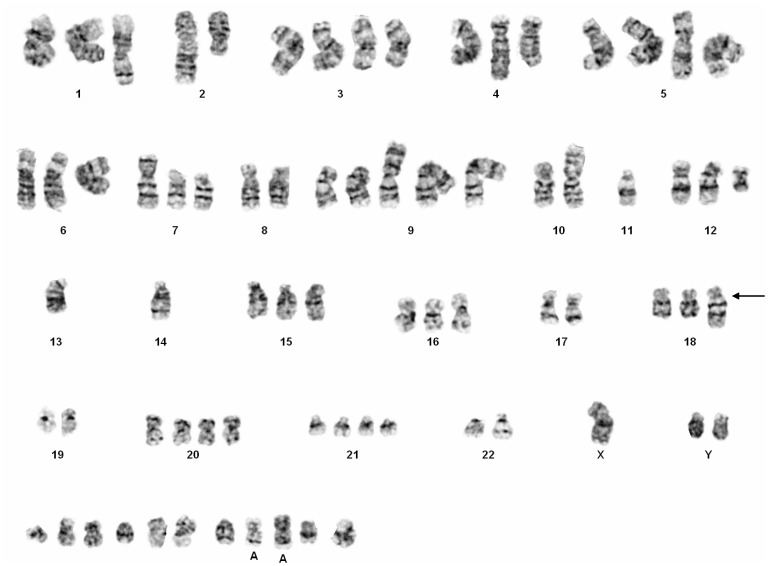Figure 2. Karyogram of LX-2 cell.
Representative numbers and appearance of chromosomes that was found in one LX-2 cell as obtained after Giemsa stain in lightmicroscopic analysis. The karyotype was determined to 74, XYY, +del(1)(q4?1), der(2;10)(p10;p10), +del(3)(q25)x2, +der(4)add(4)(q31), der(5)?t(5;9)(q35;q34)?del(5)(p15), der(5)add(5)(p1?3), +der(5)add(5)(p1?3)x2, +6,del(7)(p1?3), +del(7)(p1?3), +der(9)(11q23->11q21::14q32->14q11.2::9p13->9qter)x3, +i(10)(q10), −11, del(11)(p11.2), +del(12)(pter->q12::q15->q22::q24.2->qter), −13, −14, +15, +der(16)t(16;17)(q11.1;q11.2), +der(18)(18pter->18q11.2::1q25->1q32::7q22->7qter), +20, +20, +21, +21, der(22)?t(22;?)(q11.2;?), +11mar, respectively. Please note that a characteristic derivative of chromosome 18, i.e. +der(18)(18pter->18q11.2::1q25->1q32::7q22->7qter), is marked with an arrow in this figure. A characteristic derivative of chromosome 18 that contains part of chromosomes 1 and 7 was seen in three karyograms and is marked by a black arrow.

